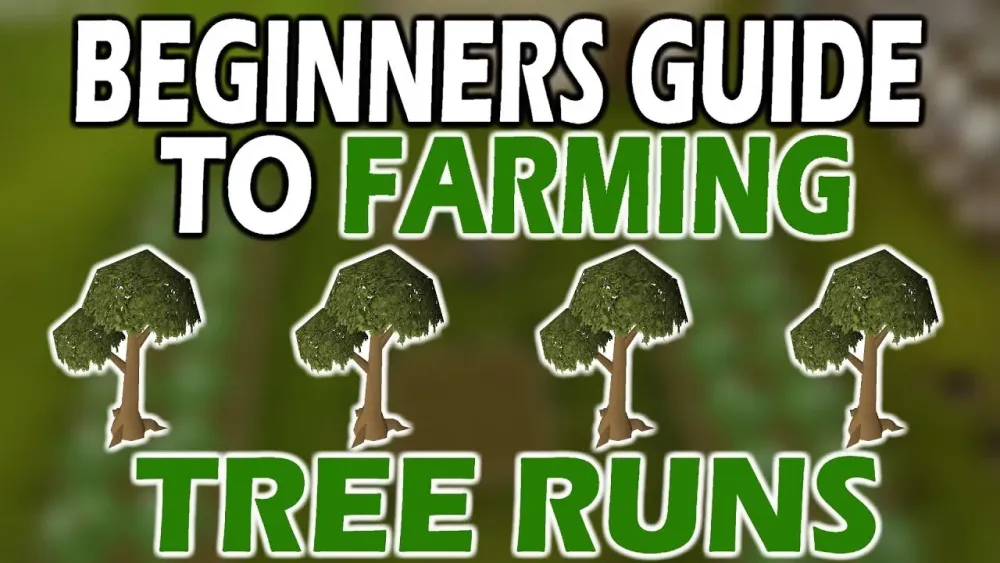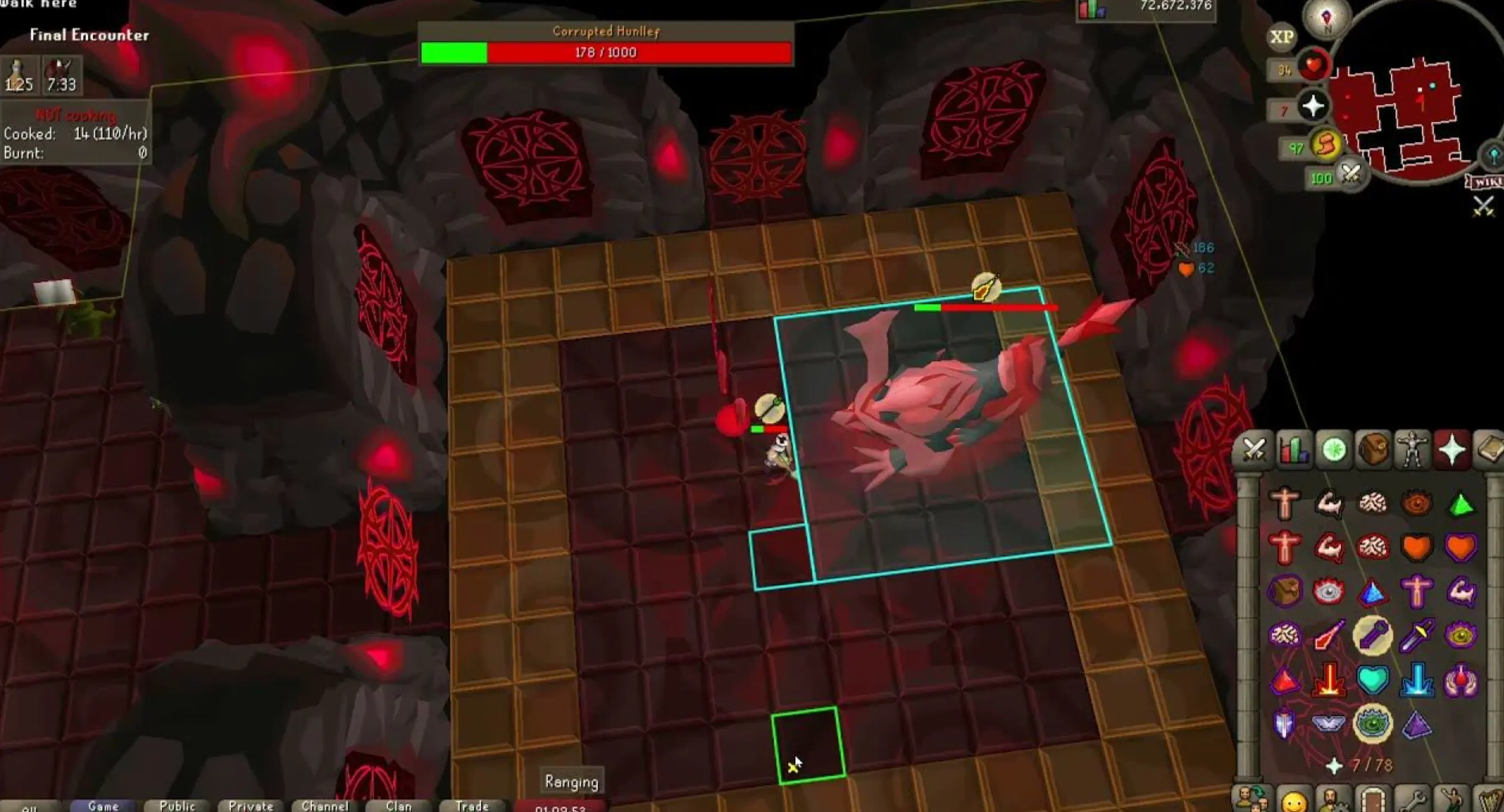Your cart is empty
OSRS Dead Tree Farming Guide for Efficient Training

Farming in Old School RuneScape (OSRS) is a unique skill that rewards patience and strategy, with tree runs being the cornerstone of efficient leveling. However, one of the challenges players face is dealing with dead trees—those unfortunate saplings that succumb to disease or neglect. In this comprehensive guide, we’ll explore how to minimize dead trees, optimize your tree runs, and maximize Farming experience (XP) while keeping costs manageable. Whether you’re a beginner or a seasoned farmer, this guide will help you navigate the pitfalls of tree farming and turn your runs into a reliable XP source.
Tree farming is the most effective way to train Farming in OSRS due to its high XP yields and passive nature. Players plant saplings, wait for them to grow (often hours), and then check their health for substantial XP rewards. However, trees can become diseased or die, resulting in lost time, money, and XP. Dead trees are a common frustration, especially for new players, but with the right strategies, you can significantly reduce their occurrence.
Why Do Trees Die?
Trees die when they become diseased and are not cured before the next growth cycle. Each growth phase presents a chance for disease, and if left untreated, the tree progresses to death. Factors influencing tree death include:
- Lack of Compost: Untreated patches have a high disease risk.
- No Protection Payment: Farmers can protect trees for a fee, guaranteeing survival.
- Random Chance: Even with compost, trees can still die without protection.
The Impact of Dead Trees
A dead tree means no XP from checking its health, wasted sapling costs, and time spent replanting. For high-level trees like Magic or Palm, this can be a significant setback, with saplings costing thousands of gold. Minimizing dead trees is crucial for both efficiency and cost-effectiveness.
Strategies to Prevent Dead Trees
Preventing dead trees requires a combination of preparation, investment, and smart choices. Here are the most effective strategies to ensure your trees thrive.
Use Ultracompost
Ultracompost reduces the chance of disease to one-tenth, compared to one-fifth for supercompost and one-half for regular compost. While ultracompost is more expensive, it’s a worthwhile investment for high-level trees. You can make ultracompost by combining volcanic ash with supercompost or purchasing it from the Grand Exchange.
Tip: Use a Bottomless Compost Bucket to store up to 10,000 compost doses, doubling the amount added for efficiency.
Pay for Protection
Paying a farmer to protect your tree eliminates disease risk entirely, guaranteeing growth. Protection payments vary by tree type, as shown in the table below:
| Tree Type | Level | Protection Payment |
|---|---|---|
| Oak | 15 | 1 Basket of Tomatoes |
| Willow | 30 | 1 Basket of Apples |
| Maple | 45 | 1 Basket of Oranges |
| Yew | 60 | 10 Cactus Spines |
| Magic | 75 | 25 Coconuts |
Note: Protection is costly for high-level trees, so weigh the cost against ultracompost for budget runs.
Leverage Disease-Free Patches
Completing the Elite Falador Diary makes the Falador Park tree patch immune to disease, saving you protection costs. Similarly, certain patches, like the Farming Guild’s high-tier patches, offer benefits with specific diary completions.
Use Magic Spells
If you have access to the Lunar or Arceuus spellbooks, spells like Cure Plant (66 Magic) or Resurrect Crops (78 Magic) can save diseased or dead trees. These are less reliable than protection but useful for Ironmen or budget players.
Optimizing Your Tree Runs
Tree runs are the backbone of Farming training, offering massive XP in just a few minutes of active time. Here’s how to structure your runs to minimize dead trees and maximize efficiency.
Choosing the Right Trees
Plant the highest-level trees you can afford and access. Higher-tier trees yield more XP but cost more. For example:
- Oak (Level 15): 467.3 XP, low cost, ideal for beginners.
- Willow (Level 30): 1,456.5 XP, affordable with moderate XP.
- Maple (Level 45): 3,403.4 XP, good balance of cost and XP.
- Yew (Level 60): 7,069.9 XP, expensive but high XP.
- Magic (Level 75): 13,768.3 XP, top-tier but very costly.
Tree Run Route
A standard tree run covers five regular tree patches and six fruit tree patches. Here’s an efficient route:
- Varrock Palace: Teleport to Varrock, run south to the tree patch.
- Falador Park: Falador Teleport, head to the park.
- Taverley: Taverley Teleport or House Teleport (if near Taverley).
- Lumbridge: Lumbridge Teleport, west of the castle.
- Gnome Stronghold: Spirit Tree or Slayer Ring.
- Fruit Tree Patches: Use teleports like Ardougne, Catherby, Brimhaven, and Lletya (Teleport Crystal).
Pro Tip: Scrolls of Redirection from Nightmare Zone can redirect House Teleports to nearby patches, saving time.
Timing Your Runs
Trees take hours to grow (e.g., Oak: 3 hours, Magic: 8 hours), so plan one or two runs daily. Check growth times in the Farming Skill Guide to align your schedule. Use an OSRS client with crop growth notifications to stay on top of your runs.
Managing Costs and Dead Trees
Tree farming can be expensive, especially at higher levels, and dead trees only add to the cost. Here’s how to balance efficiency with affordability.
Budget vs. Fast XP Pathways
There are two main approaches to tree farming:
- Fastest Pathway: Plant the highest-level trees (e.g., Magic, Dragonfruit) and pay for protection. This costs around 120M gold to 99 but takes only 70 days with two daily runs.
- Cheap Pathway: Stick to lower-tier trees (e.g., Willows, Papayas) and use ultracompost instead of protection. This is slower but significantly cheaper.
Recovering from Dead Trees
If a tree dies, don’t panic. Use Resurrect Crops (if available) or replant immediately. To avoid repeated losses, double-check that you’re using compost or paying for protection. If costs are a concern, switch to lower-tier trees temporarily.
Making Money to Offset Costs
Farming can be profitable to offset tree run expenses. Consider:
- Herb Runs: At level 90, Ranarr herb runs can net 300k profit per run.
- Sapling Creation: Grow Magic saplings for 4M/hour profit (requires 75 Farming).
- Other Skills: Use money-making methods like Slayer or bossing to fund Farming.
Tips for Beginners and Ironmen
New players and Ironmen face unique challenges in tree farming, especially with dead trees. Here are tailored tips to get you started.
Beginner Tips
Start with Oak trees at level 15, as they’re cheap and accessible. Complete quests like Fairytale Part 1 for 3,500 XP and Magic Secateurs, which boost crop yields. Always use at least regular compost to reduce disease risk.
Ironman Tips
Ironmen can’t rely on the Grand Exchange, so focus on gathering seeds from bird nests (via Woodcutting) or Slayer drops. Use the Sorceress’s Garden minigame for early XP (30-60 XP per sq’irk pick) and save protection payments by using ultracompost crafted from watermelons or pineapples.
Questing for XP
Complete these quests for early Farming XP:
- Fairytale Part 1: 3,500 XP (Level 17).
- Recipe for Disaster: 4,000 XP.
- Enlightened Journey: 3,000 XP.
By understanding the mechanics of dead trees, using compost and protection wisely, and optimizing your runs, you can make tree farming in OSRS both efficient and rewarding. Start small, scale up as you gain levels, and watch your Farming skill soar. Happy farming, adventurers!

